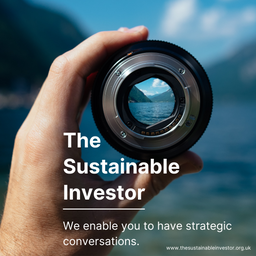
Building regs backlash in Germany; all swans are black in the dark; 20s plenty?
Building regs backlash in Germany; all swans are black in the dark; 20s plenty?
Building regs backlash in Germany.
German Housing Minister Klara Geywitz, Finance Minister Christian Lindner and a number of other senior cabinet members of the German coalition have expressed their concern about potential revisions to the EU Energy Performance of Buildings Directive (EPBD), which would include mandatory renovations for buildings with the worst energy performance.
The German government is currently targeting excessive regulation and red tape, blaming EU regulation for stifling the German economy.
There is an interesting balance. The built environment is important from a decarbonisation perspective (40% of energy-related GHG emissions), a resources perspective (40% of global raw materials), and particularly when we focus on ongoing operations, a cost of living (and hence social) perspective.
Retrofitting, particularly when reusing materials can be a successful way to both save on incremental embodied carbon (new emissions from construction/demolition) and on operational carbon (through energy efficiency - i.e. using less energy to regulate temperature). There isn't a one-size-fits-all approach however and it is important to have the necessary support and social licence to engage communities so that they buy into it (and it is affordable from a disruption and cost perspective).
Link to blogs 👇🏾


One to watch out for: we have a blog being published on Wednesday 4th October titled "Better building regulations can drive greener buildings."
All swans are black in the dark.
In a recent LinkedIn post, Andreas Posavac, Global Head of ESG, Corporate Governance and M&A Advisory at S&P Global Market Intelligence discussed a multi-year research study by The Generation Foundation and 2° Investing Initiative called "All swans are black in the dark."
The study investigates the problems of allocating capital for the long term given that the finance sector has historically struggled to capture long-term risks. It also highlights the focus on short-term risk assessment frameworks. Even 'long-term' equity managers were found to hold assets for 1.7 years on average. The study shows that currently, financial analysts tend to evaluate risks that impact cashflows over a 1-3 year time horizon.
This is a big reason why non-linear, non-cyclical, long-term risks get missed. These 'unpredictable' risks are called ‘black swans’ - subprime crisis anyone? However could these some of these black swans actually be predictable but missed by financial analysts due to their long-term, non-linear, non-cyclical profile.
There are some interesting lateral thoughts here when thinking about sustainability.
What if markets are actually long term focused, but that they believe that the pace of the sustainability transitions will be so slow that the business as usual scenario is still financially optimal?
If markets really are long term focused, this gives us some important levers. One is to change the narrative, to persuade the financial markets that starting to change now makes more financial sense than waiting.
👇🏾

Many sustainability transitions bring risks that are long-term, non-linear and non-cyclical but given their overlap with long-term financial risk, the study argues (and we agree) that they "can help identify some of the black-swans (risk reduction), as well as have a positive impact on a company's valuation, rating or fundamentals (e.g. financing costs)."
Bottom line, we don't think you can do financial analysis without considering sustainability and ESG risks.
This quote from Alex Edmans, Professor of Finance, London Business School summarises it nicely for us:
"ESG is both extremely important and nothing special. It's extremely important because it's critical to long-term value, and so any practitioner or academic should take it seriously, not just those with "ESG" in their job title or list of research interests. Thus, ESG doesn't need a specialized term, as that implies it's niche. Considering long-term factors when valuing a company isn’t ESG investing; it’s investing. But, its also nothing special since it's no better or worse than other intangible assets that drive long-term value and create positive externalities for wider society, such as management quality, corporate culture, and innovative capability."
Alex Edmans, The End of ESG
Link to blog 👇🏾

20's plenty?
The introduction of a 20 mph speed limit in built-up areas in Wales has not been without controversy. So emotive was the move that a no confidence vote in the minister who led the introduction of it, Deputy Climate Change Minister Lee Waters, was brought although was easily defeated.
The main push for the reduction in the speed limit from 30 mph to 20 mph is a safety concern and also to encourage more non-motorised transportation in built up areas - particularly for shorter journeys.
A report by Agilsys (highlighted but not commissioned by non-profit group 20s Plenty) looking at the impact one week post implementation found that there had been a 2.9 mph reduction in weighted average median speeds with a journey time increase of 45-63 seconds, however this was measured over only two roads.
The biggest push backs are economic (impact on businesses) and emotional (why a blanket introduction?). It highlights the importance and difference between policy and implementation of that policy.
Recent examples include Oxford's introduction of a Low Traffic Neighbourhood and the city centre's Zero Emission Zone and London's ULEZ. - also brings the question of social licence - something we will explore when we write on place-based impact.
Will the new 20mph limit ultimately hold given the resistance to it? I remember as a child driving up to the Lake District on holiday in my uncle's car. It was a big family holiday. There were 8 of us in the car in total, no one was wearing a seatbelt and three of us were in the boot. You'll be glad to hear that was before the 1983 seat belt law came in. However there was a lot of resistance to the introduction at the time. Now it seems unnatural to be not wearing one.
We have written about air pollution and its health impacts a fair amount. Here is a blog that we wrote specifically about air pollution and passenger vehicles. You can find other air pollution blogs on the site.
Link to blog 👇🏾

Please read: important legal stuff.


